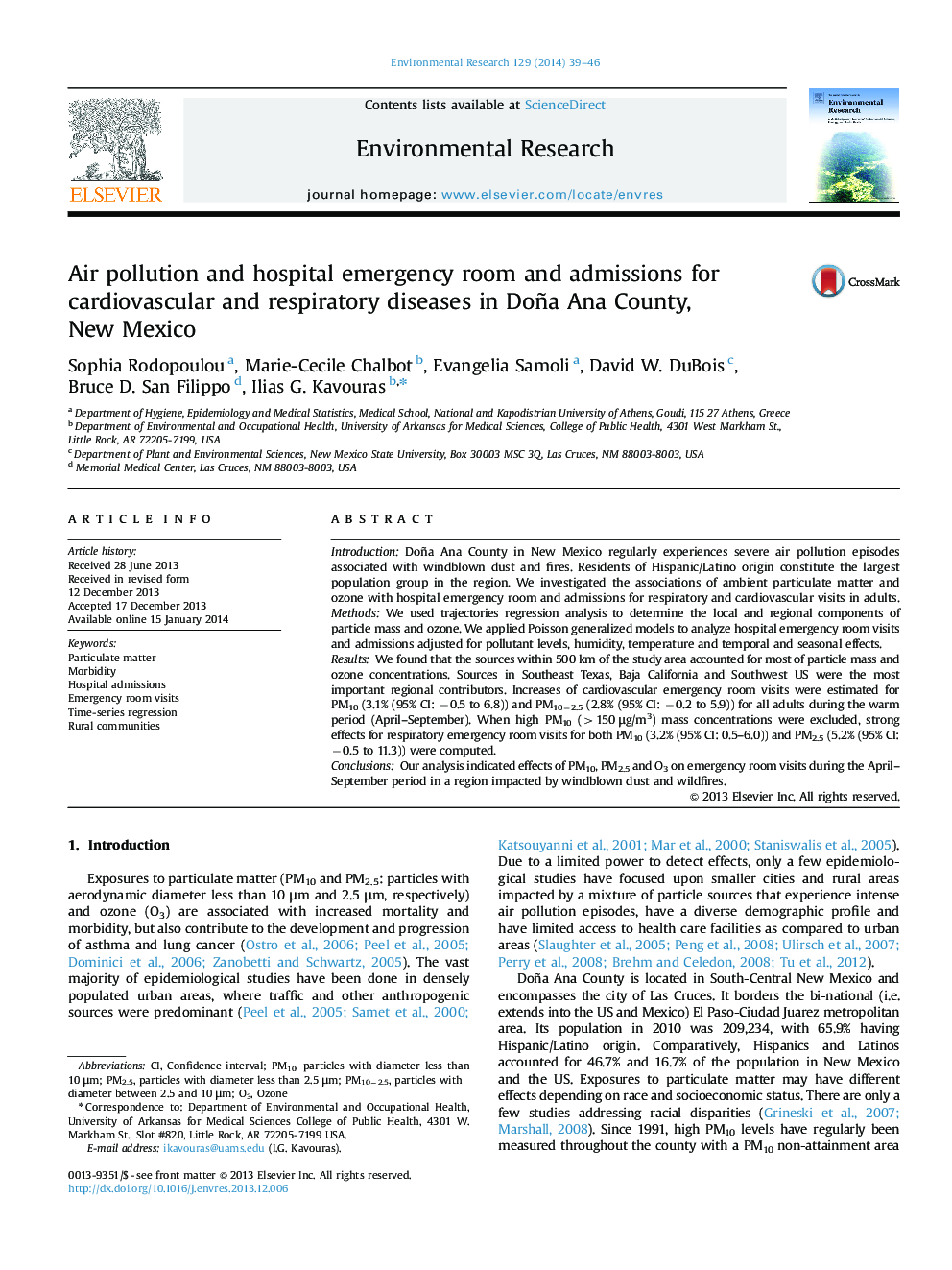| Article ID | Journal | Published Year | Pages | File Type |
|---|---|---|---|---|
| 4469867 | Environmental Research | 2014 | 8 Pages |
•Particulate matter and ozone from sources within 500 km of Doña Ana were predominant.•Air pollutant contributions from Texas, California and southwest US were important.•Cardiovascular emergencies increased by 3.1% for a 10 μg/m3 increase of particulate matter.
IntroductionDoña Ana County in New Mexico regularly experiences severe air pollution episodes associated with windblown dust and fires. Residents of Hispanic/Latino origin constitute the largest population group in the region. We investigated the associations of ambient particulate matter and ozone with hospital emergency room and admissions for respiratory and cardiovascular visits in adults.MethodsWe used trajectories regression analysis to determine the local and regional components of particle mass and ozone. We applied Poisson generalized models to analyze hospital emergency room visits and admissions adjusted for pollutant levels, humidity, temperature and temporal and seasonal effects.ResultsWe found that the sources within 500 km of the study area accounted for most of particle mass and ozone concentrations. Sources in Southeast Texas, Baja California and Southwest US were the most important regional contributors. Increases of cardiovascular emergency room visits were estimated for PM10 (3.1% (95% CI: −0.5 to 6.8)) and PM10−2.5 (2.8% (95% CI: −0.2 to 5.9)) for all adults during the warm period (April–September). When high PM10 (>150 μg/m3) mass concentrations were excluded, strong effects for respiratory emergency room visits for both PM10 (3.2% (95% CI: 0.5–6.0)) and PM2.5 (5.2% (95% CI: −0.5 to 11.3)) were computed.ConclusionsOur analysis indicated effects of PM10, PM2.5 and O3 on emergency room visits during the April–September period in a region impacted by windblown dust and wildfires.
